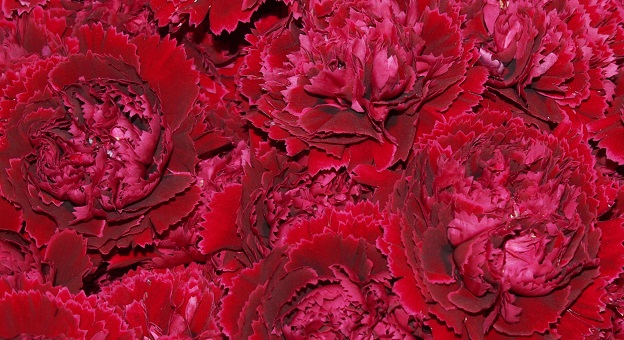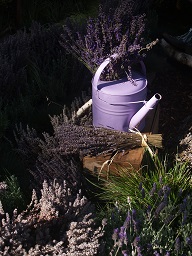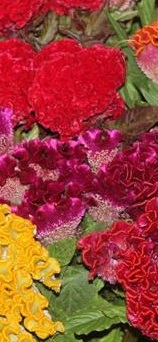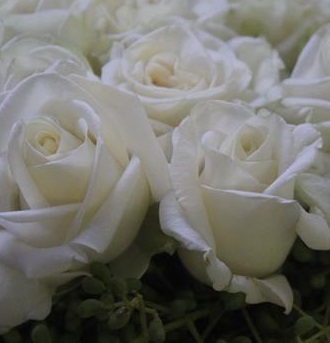Develop a Business or Career with Cut Flowers

- A 700 hour course for people working or wishing to work in the area of cut flower production.
- This course is structured in the same way as other VHT002 horticulture certificates we offer; having two parts - broad based core studies, and more specialised stream studies. Each part is 50% of the course.
- The first (core) part, develops broader knowledge and skills in horticulture; preparing you to learn and apply horticultural knowledge to anything in production or amenity horticulture.
- The second (stream) part, builds on the core with more in depth studies related to the production and marketing of cut flowers.
Because the Core Units are the same as for the other certificates (ie. Introduction to Plants, Plant Culture, Soils and Nutrition, Plant Identification and Use, Pests, Diseases and Weeds); it is relatively easy for you to switch to a different stream if you develop opportunities or interests in some other area of horticulture while studying the first half of the course.
CORE STUDIES
Through these lessons, you develop broad general skills in horticultural practices, and plant knowledge. These are relevant to growing flowers, but also useful in other areas of horticulture. By developing a broader based foundation, you not only keep your career and business options more open, you also tend to keep a broader perspective on how you view the wider world.
All students undertaking this certificate will complete these units. The core units comprise approximately 50% of the course content. The core units consist of the following lessons:
- Introduction To Plants
- Parts of the Plant
- Plant Culture - Planting
- Plant Culture - Pruning
- Plant Culture - Irrigation and Machinery 1
- Soils and Media
- Soils and Nutrition
- Seeds and Cuttings
- Other Techniques
- Identification and Use of Plants - Landscape Application
- Identification and Use of Plants - Problems
- Identification and Use of Plants - Indoor/tropical plants
- Pests
- Diseases
- Weeds
STREAM CONTENT
 A further three modules need to be selected from the following options:
A further three modules need to be selected from the following options:
The fact that you can choose half of what you are studying in this certificate, allows you a degree of specialisation that is not offered in other cut flower courses. It gives you the opportunity to effectively become an expert with two or three different types of plants; and that level of expertise may well give you a significant advantage over your competitors in the cut flower industry.
A Bigger Industry than you Might Imagine

Cut Flower businesses grow, harvest, store and transport both fresh and dried flowers and foliage, to a mixture of markets, including:
- wholesale flower markets;
- flower distributors (middle men);
- florists and retail outlets;
- export markets.
The wide range of different flowers and foliage grown can include roses, carnations, orchids, native flowers, bulb and annual flowers, and tropical flowers. Some flower farms also grow flowers in open fields for their essential oils.
Floriculture includes propagating, growing and marketing of all cut flowers, flower seeds and seedlings, bulb growing, nursery operation, chemical protection of plants, post-harvest storage and handling and use of preservatives.
A proportion of flower production takes place in greenhouses. In addition to the greenhouse production, floriculture encompasses outdoor production of herbaceous plants and flowers, and field production of cut flowers.
The International Flower Market
 As more people earn more money in developing markets such as China and India so the global demand for cut flowers increases. Cut flower production is an expanding industry worldwide. It has a great deal of export potential, and although most flower producing countries meet the domestic requirements of their home markets, there is still much untapped potential in these. Spending on cut flowers is stronger in some countries than others, the average Australian, for example, spends far less on cut flowers than say, the average German or Frenchman.
As more people earn more money in developing markets such as China and India so the global demand for cut flowers increases. Cut flower production is an expanding industry worldwide. It has a great deal of export potential, and although most flower producing countries meet the domestic requirements of their home markets, there is still much untapped potential in these. Spending on cut flowers is stronger in some countries than others, the average Australian, for example, spends far less on cut flowers than say, the average German or Frenchman.
Finding Success
In order for a producer to be successful they need to address issues such as:
- What is the market demand?
- What will the producer grow?
- Does it have an established market or is this a new product?
- How will it be presented? As bunched flowers, individual stems, or bouquets?
When a grower decides to produce a certain product the decision is influenced firstly by the constraints of the production area and secondly by the market research conducted before production commences. Potential crops are not just limited to cut flowers but may also include dried flowers, native flowers, cut foliage and fillers for bouquets. Most growers increase their chance to make a profit by growing more than one variety throughout the growing season by choosing species that extend the harvest period. Successful growers will understand the limitations of the growing area through soil analysis, climate, aspect, drainage and irrigation and also the specific requirements of the varieties they choose to grow, i.e. soil pH, fertiliser etc.
Where Can this Lead?

For anyone with entrepreneurial drive, and a desire to build their own business, this course can open your eyes to a wide range of possibilities - to create and develop your own business with cut flowers, whether as a grower orin some other capacity.
For anyone seeking to work for someone else, this courses can be equally valuable. With the knowledge and skills you learn, you will increase your value as an employee in any cut flower business.
In addition, the broader horticultural knowledge that comes from this course can provide a foundation for working in any area of horticulture.
- If your interests grow in a different direction; you will be well placed to move into work in any other area of horticulture.
- If the cut flower industry ceases to offer you opportunities you had hoped for, this course will have prepared you to find and follow opportunities in other horticultural industries.
Questions?
If you have any questions at all, please CLICK TO CONTACT US